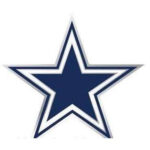Are These Players Really Deserving Of Being In The Pro Football Hall of Fame?
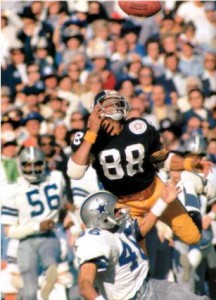
While Lynn Swann made some of the most spectacular catches in Super Bowl history, his play during the rest of his career is hardly Hall of Fame worthy.
Over the last two years I have spent a significant amount of time analyzing the players that are in the Pro Football Hall of Fame and those who have Hall of Fame caliber credentials, but have not been inducted. It has reaffirmed my belief that there are a lot of deserving football players who have yet to get a bust in Canton. It also has made me scratch my head over a few of the players that have received football immortality.
Overall, I will say that for the most part, the Hall of Fame voters have done a very good job of selecting top players for the Hall of Fame. While I believe there are at least two dozen deserving players who have been overlooked, the number of players in the Hall of Fame that I question is significantly less.
In fact, when I originally created my list of the top 10 players in the Hall of Fame that I think you could argue don’t belong I actually was able to only come up with nine players from the modern era that I really questioned. However, the selection this year of Dick LeBeau provided the 10th name for my list.
In creating my list I did not analyze any of the players from the pre-1950 era who have been inducted into the Hall of Fame. My reasoning being that the game during that time period and selection process in the early days of HOF is so different than today that trying to argue for or against certain players from the pre-modern era made little sense.
Instead, players had to have played a majority of their careers after 1950 to be considered for this list.
The one player that this rule may have saved was Bob Waterfield, the former Rams quarterback. I have seen a number of articles in recent years questioning if his numbers justified being in the HOF or if he got in primarily because he was married to then pinup girl Jane Russell.
So, here is my list of players whose Hall of Fame status I think could be questioned. In some cases it isn’t necessarily that I think they don’t belong, but rather question how they could have been inducted before other players from their era or who played the same position.
However, there are a couple that I think were selected purely because of politics and the “scratch my back” network. I’m sure there will be strong disagreement to some of my choices, but remember, these are my opinions and the great thing about having opinions and living in the United States is that everyone is entitled to one and encouraged to share it.
I have given mine, and now I encourage you to share your thoughts and opinions.
10. Bob Griese – Miami Dolphins – 1967-1980
Bob Griese–and to a lesser extent Troy Aikman and for most of his career Terry Bradshaw–was a quarterback who is in the Hall of Fame because he was the quarterback for one of the best teams of his era.
Don’t get me wrong, Griese was a good quarterback, but he is in the Hall of Fame because he directed a Miami team that won two Super Bowls, not because of his passing statistics.
For most of his career, the Dolphins didn’t need Griese to throw the ball for them to win. Some would argue that makes him more deserving because he doesn’t have the gaudy stats. However, others could say that because of the great Miami running game, when Griese threw the ball he had an advantage as opponents always had to watch for the run.
In 14 seasons in the NFL, Griese never passed for more than 2,473 yards in a season and threw 20 or more touchdowns in a year only twice. He completed 56.2 percent of his passes and had a career passer rating of 77.1, which ranked 10th in NFL history at the time of his retirement and is 71st today.
Griese is the ultimate example of how being a Super Bowl winning quarterback is almost required criteria for a quarterback looking to get into the Hall of Fame.
The only quarterbacks who are in the Hall of Fame in the Super Bowl era without a ring are Dan Fouts, Warren Moon, Dan Marino and Jim Kelly. But, I don’t really count Kelly since he played in four Super Bowls.
There are many quarterbacks, from his own era as well as the more recent era, with far greater statistical numbers than Griese, but are not in the Super Bowl because they never won the Super Bowl.
Griese probably deserves to be in the Hall of Fame, but there are a number of other quarterbacks, including Ken Anderson, John Brodie and Boomer Esiason who were arguably better, but who never won the big game and therefore are on the outside looking in.
9. Dick LeBeau – Detroit Lions – 1959-1972
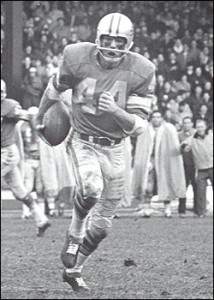
Dick LeBeau was a solid NFL player, but hardly Hall of Fame worthy. His supporters bullied the Hall of Fame committee into selecting the popular NFL assistant.
If he were being recognized concurrently for his playing career and nearly 40 years as an NFL assistant then I would have very little concern over the selection of LeBeau. However, judging purely on his career on the gridiron, which is how the committee supposedly considered him, then I struggle to see how Dick LeBeau is a Hall of Famer.
While he did intercept 62 passes during his 14 year career, LeBeau was named to only three Pro Bowls and was never a first team All-Pro. During various points in his career, LeBeau played in a secondary with Hall of Famers Lem Barney, Dick “Night Train” Lane and Yale Lary.
Interceptions are one of those stats that can be deceiving. How often a cornerback makes an interception can be greatly impacted by the players around him. Often, the weakest member of a secondary ends up with the most interceptions because quarterbacks would rather test that player than take chances against some of the other players in the secondary.
Let me use the old analogy about the town with two barbers to illustrate why I am not sold on LeBeau’s greatness or Hall of Fame worthiness.
So a new guy comes to a town that has two barbers and he needs a haircut. He sees the first barber and his hair looks perfectly groomed with every hair smoothly trimmed and combed nicely into place. The second barber has a very uneven haircut with some patches noticeably longer than others and not well trimmed.
So, which barber should he choose?
Most people would probably choose the first barber because he looks good, which automatically makes you assume he is a good barber. Sort of like an NFL defensive back with a large number of interceptions.
However, in reality the better barber is the second guy, because he is the one who cut the first barbers hair and made it look so nice.
LeBeau’s NFL stats are like the looks of the first barber, they are due to the work of the second guy. He has good numbers and therefore people just assume he is good. However, in reality LeBeau’s high interception total is at least partly due to the fact that he spent almost his entire career playing opposite a superstar that quarterbacks knew they didn’t want to mess with.
Quarterbacks decided they would rather take their chances against LeBeau than to mess with Lane, Lary or Barney.
Now certainly 62 interceptions is a respectable total, but in the past the Pro Football Hall of Fame selectors have made it clear that interceptions alone do not warrant a spot in the Hall.
Of the 20 eligible players with 54 or more interceptions, only 10 are in the Hall of Fame.
In fact, taking it a step further, the three players with 60 or more interceptions who are not in the Hall of Fame, Ken Riley (65 picks), Dick LeBeau (62) and Dave Brown (62) combined for a grand total of four Pro Bowl appearances (three by LeBeau and one by Brown) and one first team All-Pro pick (Riley in his final NFL season) during their combined total of 44 NFL seasons.
As I mentioned earlier, LeBeau was never a first-team All-Pro and made just three Pro Bowl appearances. There are 37 defensive backs that have not been selected for the Hall of Fame who appeared in four or more Pro Bowls and most of them were first team All-Pros on multiple occasions.
In my opinion, the Hall of Fame committee was bullied into selecting LeBeau. During his Hall of Fame induction speech Rod Woodson called for LeBeau’s selection and Pittsburgh Steeler players lobbied for his induction when they played in the 2007 Hall of Fame game.
Because someone cannot be considered for induction for success at a football job they currently hold, LeBeau’s work as an NFL assistant could not be considered as part of his overall worthiness until after he retires from coaching. In my opinion, the Hall of Fame committee would have maintained some legitimacy by waiting until after he retires from coaching and then considering LeBeau based on his total resume because in just looking at his playing career he falls woefully short of deserving induction.
8. Fred Dean – San Diego Chargers/San Francisco 49ers – 1975-1985
My problem with Fred Dean being in the Hall of Fame is not necessarily that he didn’t have the career numbers or overall performance worthy of the Hall of Fame. My reason for including Dean on this list is that when he was inducted in 2008 he was chosen over a number of players who I think were better players and more deserving of Hall of Fame recognition.
When looking at defensive linemen, I just don’t know how voters could select Fred Dean knowing that L.C. Greenwood, Richard Dent and even Chris Doleman, Roger Brown and Harvey Martin all are not.
Dean was a solid player for 12 years and helped lift the San Francisco defense to championship heights. However, he was very one-dimensional and considered a rush specialist.
Before putting Dean into the Hall, I think they should have at the very least put Greenwood and Dent in the Hall of Fame. Hopefully those deserving players will earn entry soon.
7. Rayfield Wright – Dallas Cowboys – 1967-1979
When I have had discussions with people about which players don’t belong in the Hall of Fame and bring up Rayfield Wright’s name, the other person often looks at me in complete shock and surprise.
I may be completely off base on this, but even though I grew up as a huge fan of the 1970s Cowboys and liked Wright, I believe that his greatness has been slightly exaggerated.
At 6-foot-6 and more than 255 pounds, he was definitely one of the bigger tackles of his era. However, it took Wright three years to supplant All-Pro Ralph Neely in the starting lineup (forcing Neely to move to left tackle).
Wright then started for seven years before injuries relegated him to a backup role for his final three years.
There is no question that at his peak Wright was one of the best offensive linemen in the league. I guess where I struggle is that in the context of offensive linemen, his peak was relatively short. There are many offensive linemen not in the Hall of Fame who were in more than the six Pro Bowls to which Wright was selected and who earned All-Pro honors more than three times.
In my rankings of the top offensive linemen not in the Hall of Fame, the top five choices combined to average seven Pro Bowl appearances and five first team All-Pro selections. Given that Wright’s peak was only seven seasons, I just am not sold that he is more deserving of being in the Hall of Fame than Dick Schafrath, Walt Sweeney, Dermontti Dawson, Jim Tyrer or Jerry Kramer.
6. Dan Dierdorf – St. Louis Cardinals – 1971-1983
I don’t know what it is about the St. Louis Cardinals of the 1960s and 1970s, but they did something that forever endeared the players from that team with the Hall of Fame voters.
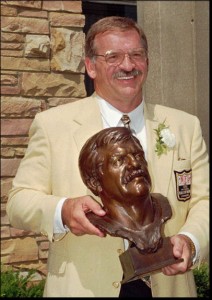
Though his credentials don't stack up to those of many other offensive linemen, Canton native Dan Dierdorf is in the Hall of Fame.
Despite the fact that between 1965 and 1980 the Cardinals had only six winning seasons and did not win a playoff game, there are four Cardinals from that era in the Hall of Fame.
There are many great players from other teams that were not consistent winners during that era who have been unable to earn a spot in Canton. Yet, team success didn’t seem to be part of the criteria when considering members of the Cardinals.
Dan Dierdorf is one of two Cardinals who have made my list of players who may not deserve to be in the Hall of Fame. I think Larry Wilson is definitely deserving of his spot in Canton and while I could be persuaded that Jackie Smith doesn’t belong, I chose not to include him on this list.
I believe that Dierdorf, a native of Canton, Ohio, is in the Hall of Fame for two reasons. The first is his hometown and the second is that at the time of his induction he was an announcer on ABC’s Monday Night Football.
Just like Rayfield Wright, Dierdorf was a six-time Pro Bowl selection and three-time first team All-Pro. Yet, Dierdorf was a finalist in five of the eight years he was eligible before being inducted. Wright, on the other hand, was eligible for nearly two decades before even being a finalist and then was finally selected in his 22nd year of eligibility.
And, that doesn’t even account for all the players I mentioned in the earlier analysis of Wright that are still not in the Hall of Fame, though they have resumes far superior to either Wright or Dierdorf and far more playoff appearances and Super Bowl wins than Dierdorf.
Dierdorf was a good offensive lineman, but I think his inclusion over such great offensive linemen as Jerry Kramer, Dermontti Dawson, Dick Schafrath, Walt Sweeney and several others in a complete injustice.
5. Frank Gatski – Cleveland Browns – 1946-1957
Frank Gatski spent 11 years playing center for the Cleveland Browns. He was part of the core unit that dominated the AAFC and then continued to succeed in the NFL.
Gatski was the last of six original members of the Browns to earn a spot in Canton.
While most of the other members of that Cleveland team were well decorated, Gatski played in only one Pro Bowl in his entire career. Despite the fact that the Browns were the dominant team in the AAFC, Gatski was never an all-league selection. He earned All-NFL honors three times.
Judging Gatski solely by his accolades, or lack of them compared to other great offensive linemen, may be slightly unfair. However, when compared to most other offensive linemen in the Hall of Fame and many who have not yet received the honor, it is arguable that Gatski doesn’t stack up.
Another indication is that it took him nearly 30 years after retirement to earn Hall of Fame honors. He was a HOF finalist only once in more than 20 years of eligibility before being inducted.
4. Charlie Sanders – Detroit Lions – 1968-1977
When the Hall of Fame selections for 2007 came out and Charlie Sanders and Roger Wehrli were named to the Hall I couldn’t help but scratch my head.
Sanders had been a solid tight end for the Detroit Lions during the 1970s, but until he was selected as a finalist and then immediately inducted in 2007 I had never heard him mentioned as clearly deserving a spot in the Hall of Fame.
I know he was a tight end and not a wide receiver, but at the time of Sanders’ selection Art Monk, one of the best receivers of all time, was still not yet in the Hall. Also not in the Hall of Fame are several other great pass catchers from the same era as Sanders, including Cliff Branch, Drew Pearson, Harold Carmichael and Harold Jackson.
Even given that Sanders was a tight end, I just don’t see him being a better overall football player and more worthy of Hall of Fame selection than any of those players.
Plus, with the exception of Jackson, all the players I just mentioned played in at least one Super Bowl and Branch and Pearson were key members of championship teams.
3. Roger Wehrli – St. Louis Cardinals – 1969-1982
The review of Sanders leads right into his fellow member of the Hall of Fame Class of 2007, Roger Wehrli.
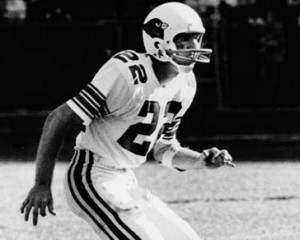
Though they didn't win much on the field, the St. Louis Cardinals of the 1960s and 1970s are well represented in the Hall of Fame.
A seven-time Pro Bowl selection and three-time All-Pro, Wehrli was a fine NFL player, but there are so many great defensive backs not in the Hall of Fame that when he suddenly became a finalist in 2005 and then was inducted two years later it was a complete shock.
The number of great defensive backs that have not yet earned enshrinement in the Hall of Fame is extensive and growing every year. The list includes a number of old-time pros including two members of the AFL all-time team Johnny Robinson and Dave Grayson.
Another player who seems to be as, or more deserving, of Hall of Fame status is a contemporary of Wehrli’s in former Cowboy Cliff Harris. Harris played in six Pro Bowls and was a first-team All-Pro three times. He was also a key part of a great defensive team that made nine playoff appearances in his 10 years. Wehrli, on the other hand, played in two playoff games in his career.
I just don’t understand how the Hall of Fame voters can take the quarterback position and almost completely limit Hall of Fame enshrinement to Super Bowl winners, but at other positions seem to go out of their way to select players from average teams at the expense of great players from winning teams.
2. Jan Stenerud – Kansas City Chiefs/Minnesota Vikings/Green Bay Packers – 1967-1985
I am not opposed to having a placekicker in the Pro Football Hall of Fame. I just think the Hall of Fame voters selected the wrong one when they chose Jan Stenerud.
In my opinion, Stenerud is a perfect example of a player whose reputation far out-weighed his actual value.
When he joined the AFL in 1967, the soccer style kicker possessed one of the strongest legs football had seen up until that time and was definitely better than any other kicker in franchise history.
Playing on one of the top teams in the league, Stenerud eclipsed the 100-point mark in each of his first five seasons in the league, including 129 points in 1968.
However, he was obtaining such high numbers as much out of volume as of accuracy. As a rookie in 1967 he scored 108 points despite hitting only 58.3% of his field goal attempts. He converted at least 70% of his field goal tries in each of the next three seasons, but then only reached that figure one more time during his final nine seasons with the team.
In fact, he was under 60% five times, including making only 44.4% in 1977. If a kicker today produced those kinds of numbers they would be headed for the parking lot, not the Hall of Fame.
Stenerud is often pointed out as being a key reason the Chiefs were a perennial playoff team during the late 1960s and early 1970s. However, I contend that if Stenerud had actually been as good as his reputation, the Chiefs might have more than one Lombardi Trophy in their offices.
In the 1971 AFC Playoff Game against the Miami Dolphins, known as the Longest Game Ever Played, Stenerud had a chance to end the game in regulation, but missed a 29-yard field goal in the final minute of regulation. He later had a 42-yard kick blocked.
After 13 seasons with the Chiefs, during which he connected on 64% of his field goal attempts and 96.3% of his extra points, Stenerud was released in favor of Nick Lowery, who spent the next 14 years with Kansas City.
Just to compare numbers, Lowery converted 80.2% of his field goal attempts and 99.2% of his extra points while with the Chiefs.
Stenerud became more accurate later in his career as he connected on 77.0% during six seasons with the Packers and Vikings.
For his career, Stenerud scored 1,699 points to rank 10th all-time. He ranks 99th all-time with an accuracy rate of 66.8% for his field goals.
I know field goal percentages have climbed significantly over the years as a number of factors have made it easier to accurately kick the ball. However, even at the time of his retirement Stenerud did not rank in the top 10 all-time for field goal accuracy.
1. Lynn Swann – Pittsburgh Steelers – 1974-1982
In my opinion, there is no player even remotely as undeserving of being a member of the Pro Football Hall of Fame as Lynn Swann.
That he was a finalist for the Hall of Fame 14 times and then finally inducted in 2001 is an illustration of how the Hall of Fame voters are occasionally horribly swayed by popularity and style.
Lynn Swann played the game with style and flair, but while he made some big plays in big games, he was never a consistently great player. In fact, during the regular seasons of his nine campaigns he was rarely even consistently very good.
A Hall of Fame player has to be unquestionably one of the dominant players of his era. Swann was selected for three Pro Bowls and was first team All-Pro one time, but he wasn’t ever among the best game-to-game receivers in the league.
Playing in an offense that included a Hall of Fame runner in Franco Harris and another Hall of Fame receiver in John Stallworth, Swann may not have gotten as many chances as receivers who were always the go-to player. However, he also never received the kind of defensive attention that was seen by many of his contemporaries that were always the primary defensive focus.
Swann seems to have ridden his great performance in Super Bowl X straight to the Hall of Fame. In that game, he not only caught four passes for 161 yards and a touchdown to earn MVP honors, but he did it with style and grace. His acrobatic catch while falling down near mid-field with a defender on him ranks as one of the best catches of all-time.
However, one acrobatic catch in a Super Bowl does not make you a Hall of Famer. If it did, then David Tyree would need to start preparing his Hall of Fame speech.
Statistically, Swann is not even among the 10 best receivers of his era. He caught only 336 passes for 5,462 yards and 51 touchdowns in nine years. That means, his annual season average was 37 catches, 606 yards and 6 touchdowns. How anyone can consider those to be Hall of Fame numbers is beyond my understanding.
And it isn’t even like he had a couple of huge seasons and then tapered off. In 1978 Swann had career-best totals of 61 catches, 880 receiving yards and 11 touchdowns. Those totals ranked him seventh in the NFL in receptions and receiving yards and second in touchdowns.
There are a number of receivers from the same era who, in my opinion, have far greater justification to being in the Hall of Fame, yet none of them have even been named as Hall of Fame finalists, much less received a bust in Canton.
The most obvious is the player who wore number 88 for the Dallas Cowboys at the same time Swann was 88 for the Steelers, Drew Pearson. Spending much of his career dealing with double and triple coverage because the Cowboys had no other receiving threat, Pearson still was a three-time first team All-Pro and caught 489 passes for 7,822 yards and 48 touchdowns.
Pearson also rivals Swann for his clutch playoff performances.
Other great receivers from the 1970s that deserve Hall of Fame consideration include Cliff Branch, Harold Carmichael and Harold Jackson.
Now that Bob Hayes has gotten into the Hall of Fame, hopefully the Hall of Fame voters will start giving due justice to these other great receivers who played in an era before reception totals exploded.
While they are at it, the Hall of Fame voters should rescind Swann’s bust and apologize saying they got caught up in the flash and sizzle.
I know that will never happen, but it should!
